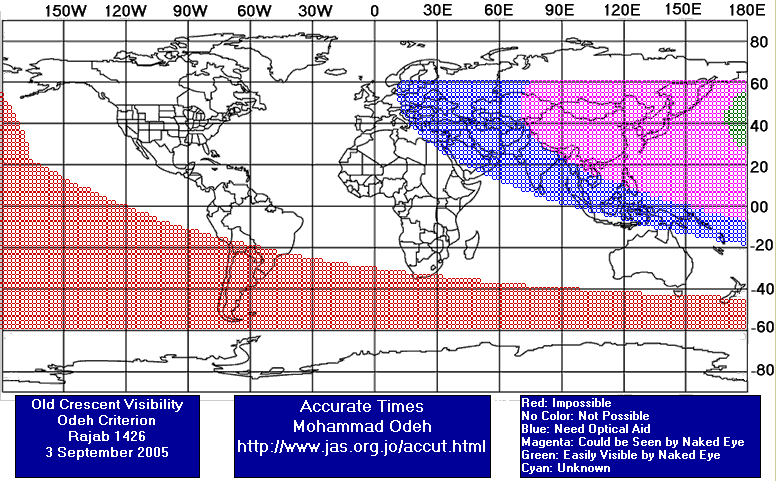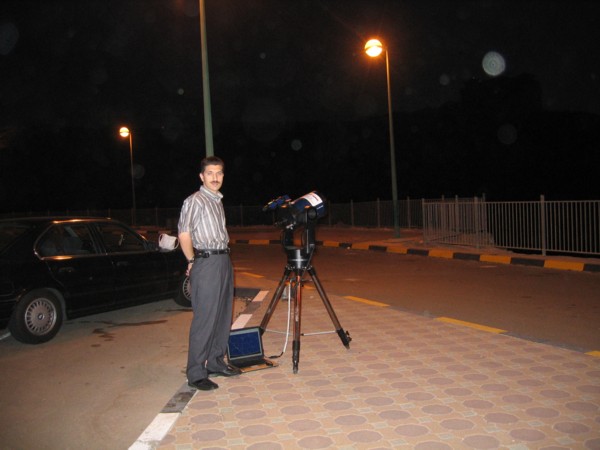Visibility of Shaban Crescent
(1426 AH)
- When to Observe Rajab Waning (OLD) Crescent ?
- When to Observe Shaban Waxing (NEW) Crescent ?
- Rajab Waning (OLD) Crescent Observation Results
- Shaban Waxing (NEW) Crescent Observation Results
- The OFFICIAL First Day in Different Countries
In Other Pages:-
- ICOP Main Page
- Members of ICOP (Individuals)
- Members of ICOP (Groups)
- Friends of ICOP
- ICOP Membership Application (For Individuals)
- ICOP Membership Application (For Groups)
- ICOP Observation Report Form
- ICOP Related Links
The geocentric conjunction (Geocentric New Moon) will occur Inshalla on (Saturday 03 September 2005), at
18:45 UT. On this day, the program Accurate Times by Mohammad Odeh -according to Odeh criterion- showed that the OLD crescent should be visible by optical aid from East Europe, West and South East Asia. While it could be seen by naked eye (or still by optical aid only) from east Asia.
The geocentric conjunction (Geocentric New Moon) will occur Inshalla on (Saturday 03 September 2005), at
18:45 UT. On this day it is impossible to see the NEW crescent from all Islamic countries. While on the next day (Sunday 04 September 2005), the program Accurate Times by Mohammad Odeh -according to Odeh criterion- showed that the NEW crescent should be visible by optical aid from south east Asia, Middle East, North Africa and North America. While it could be seen by naked eye (or still by optical aid only) from Central and Southern Africa and parts of north America. Where as it should be easily seen by naked eye from South America.
According to the actual sighting of the crescent, the start of Shaban should be on Monday 05 September 2005 in almost all the world.
- Results of seeing the crescent, and the first day of the month in different countries will be added here Inshalla as we receive the reports from ICOP's members. If you wish to be a member in ICOP, or to know more about it, kindly click here.
Saturday 03 September 2005:
Friday 02 September 2005:

When to Observe Rajab Waning (OLD) Crescent ?


When to Observe Shaban Waxing (NEW) Crescent ?


Rajab Waning (OLD) Crescent Observation Results
"Date: 03 September 2005.
Location : 46:34:04E, 33:22:48N
Temperature: 7 c.
Height: ~ 2500 m.
Time Zone : +4.5
City: Elam - Iran
Mag limit: +6.5
Seen by 40*150 binoculars.
Old Moon crescent of Rajab 1426
See the crescent by Mr. Abbas Ahmadian and Arman Afshari"






